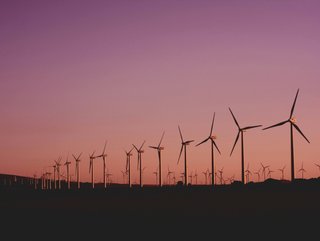How Nike is Increasing Reliability on Renewable Energy

Athletic giant Nike has outlined its energy efficiency milestones and goals as part of its newly-released report reflecting on the last financial year.
In its 2023 performance summary, Nike reported it is aiming for a 70% absolute reduction of greenhouse gas emissions in owned or operated facilities through 100% renewable electricity and fleet electrification. Back in 2020, the brand emitted 226,000 metric tonnes CO2e, reducing to 88,000 in 2022 and then to 71,000 by the end of 2023. It has reported that it is well on its way to reaching this goal, having clocked 96% renewable energy in its operations for the last calendar year.
In the FY23 report, Nike reiterated the importance of offsite renewable energy in reaching its targets. Nike predicts that onsite renewable electricity can cover up to 15% of a facility’s electricity consumption, while procurement-based emission reductions have the ability to eradicate any remaining greenhouse gases as a byproduct of electricity generation.
Nike's attitude to challenge climate change
Nike’s Move to Zero initiative is an embodiment of its journey toward zero carbon and zero waste and a first-hand response to the realities. Blazing its way to powering owned-and-operated facilities with 100% renewable energy by 2025.
While procuring energy is vital to Nike reaching its 100% renewable energy goal by or before 2025, Nike is also implementing its own initiatives to generate its own power. For example, the brand has been actively installing solar panels on the roofs of its buildings and facilities, like its European Logistics Campus in Belgium, which features one of the largest rooftop solar installations in the country.
By harnessing solar power, Nike aims to reduce its reliance on non-renewable energy sources and decrease its carbon footprint.
“Whether it’s getting more than one million kids active around the globe, spending a cumulative US$1.4bn with diverse suppliers or reducing 69% of greenhouse gas emissions since 2020 in our owned and operated facilities, we choose to act with confidence in the face of today’s most pressing challenges,” said John Donahoe, President and CEO of Nike said in the company’s FY23 report.
Nike’s 2023 progress against its carbon targets
‘Owned and operated’ Nike facilities are working ahead of the companies SBT-aligned 1.5-degree reduction target, having achieved a 69% reduction in emissions from its owned and operated facilities compared to a 2020 baseline. This is in part due to renewable electricity usage driving most of the reductions across Scope 2 emissions. The majority of Nike’s renewable power is procured from direct and virtual power purchase agreements in North America and Europe, as well as onsite wind and solar power at distribution centres and green premium options. Nike’s ongoing energy efficiency work also helped contribute to Scope 1 emissions reductions despite weather-related increases in energy use.
Equally positive strides have also been made across Nike manufacturing and transport. In FY23, Nike aimed to maintain emissions from manufacturing and transport at 2020 levels, despite notable business growth. A 19% reduction in emissions has been recorded thus far thanks to a reduction in air freight and scaling sustainable shipping fuels, as well as the aforementioned increasing use of renewable energy. Renewable energy use by suppliers also increased by 50%, with renewables accounting for a fifth of energy sourced. Nike’s renewed focus on sustainable biodiesel fuels for ocean shipping also made a great impact, with it reporting the reduction of more than 21,000 metric tonnes of greenhouse gas emissions.
While these statistics are promising, plans to expand these initiatives continue, with investments in sustainable fuels and collaboration hoping to promote sustainable shipping.
As well as this, Nike is among global leaders which came together to launch the Clean Energy Procurement Academy to equip companies with the technical readiness to explore and adopt clean energy, an essential factor in global decarbonisation.
*******************
Make sure you check out the latest edition of Energy Digital Magazine and also sign up to our global conference series - Sustainability LIVE 2024.
*******************
Energy Digital is a BizClik brand.






